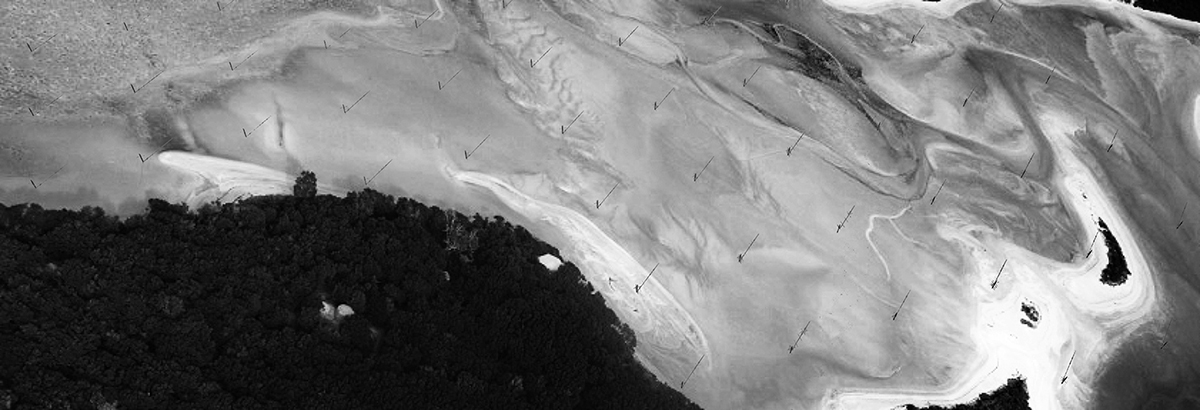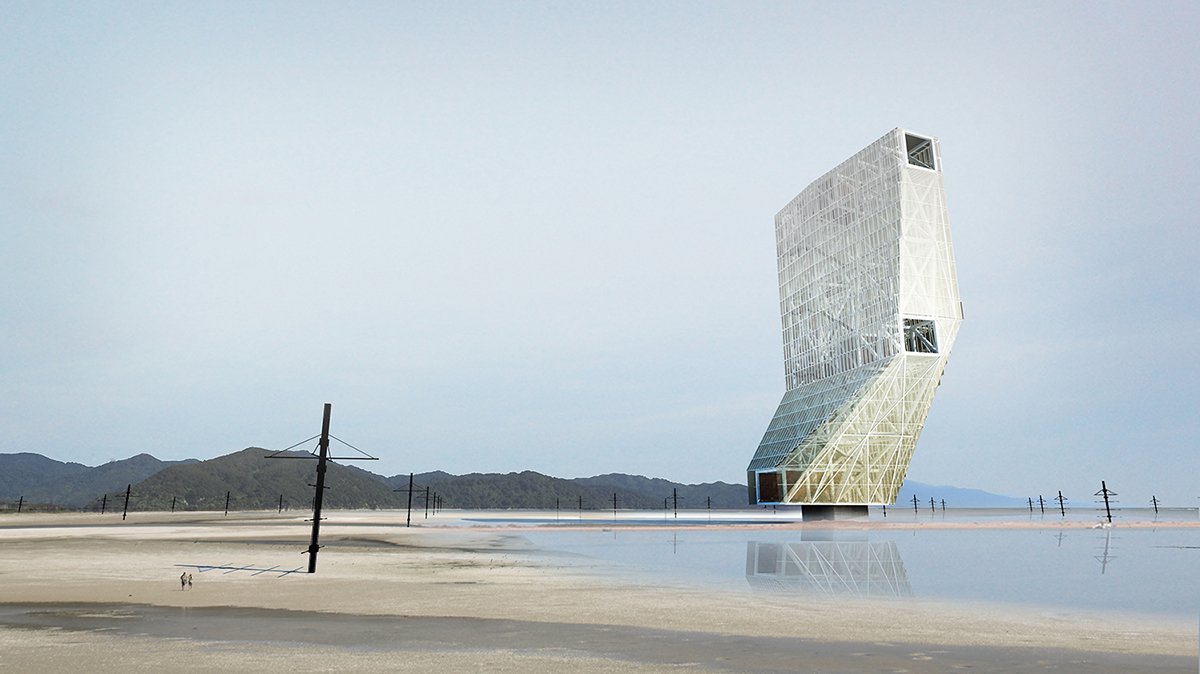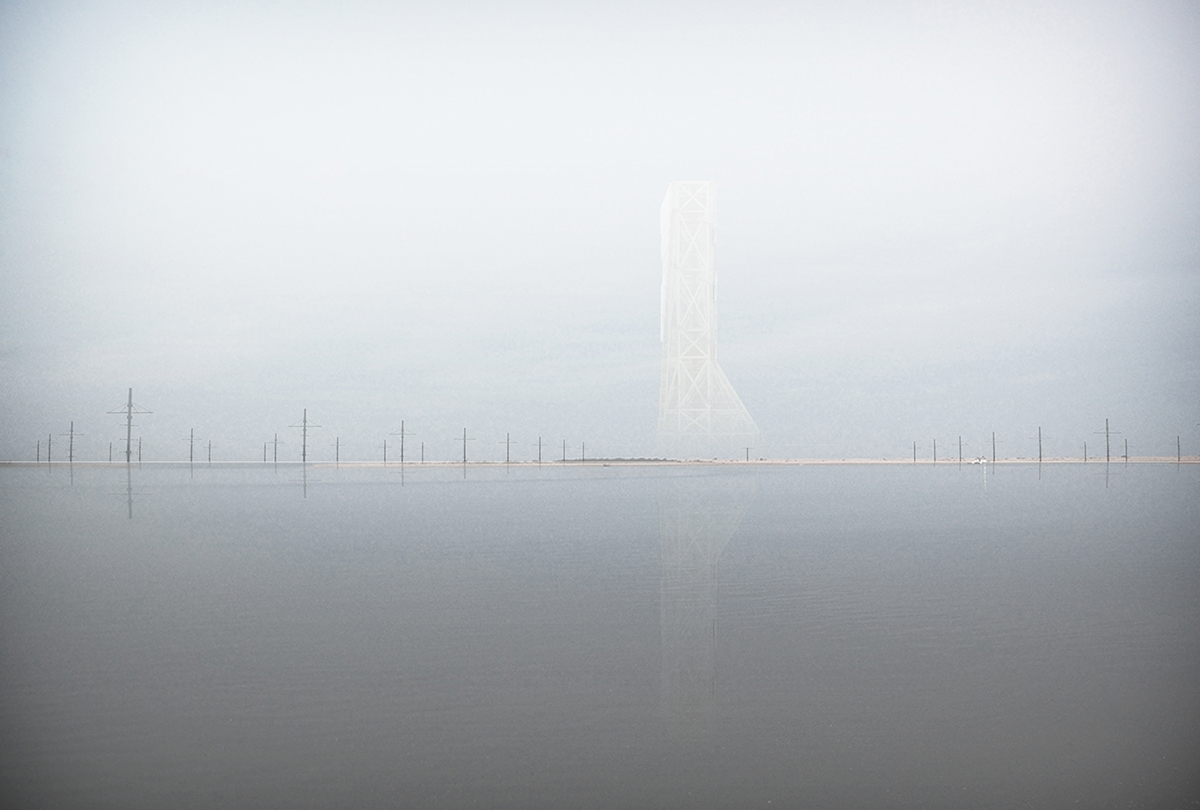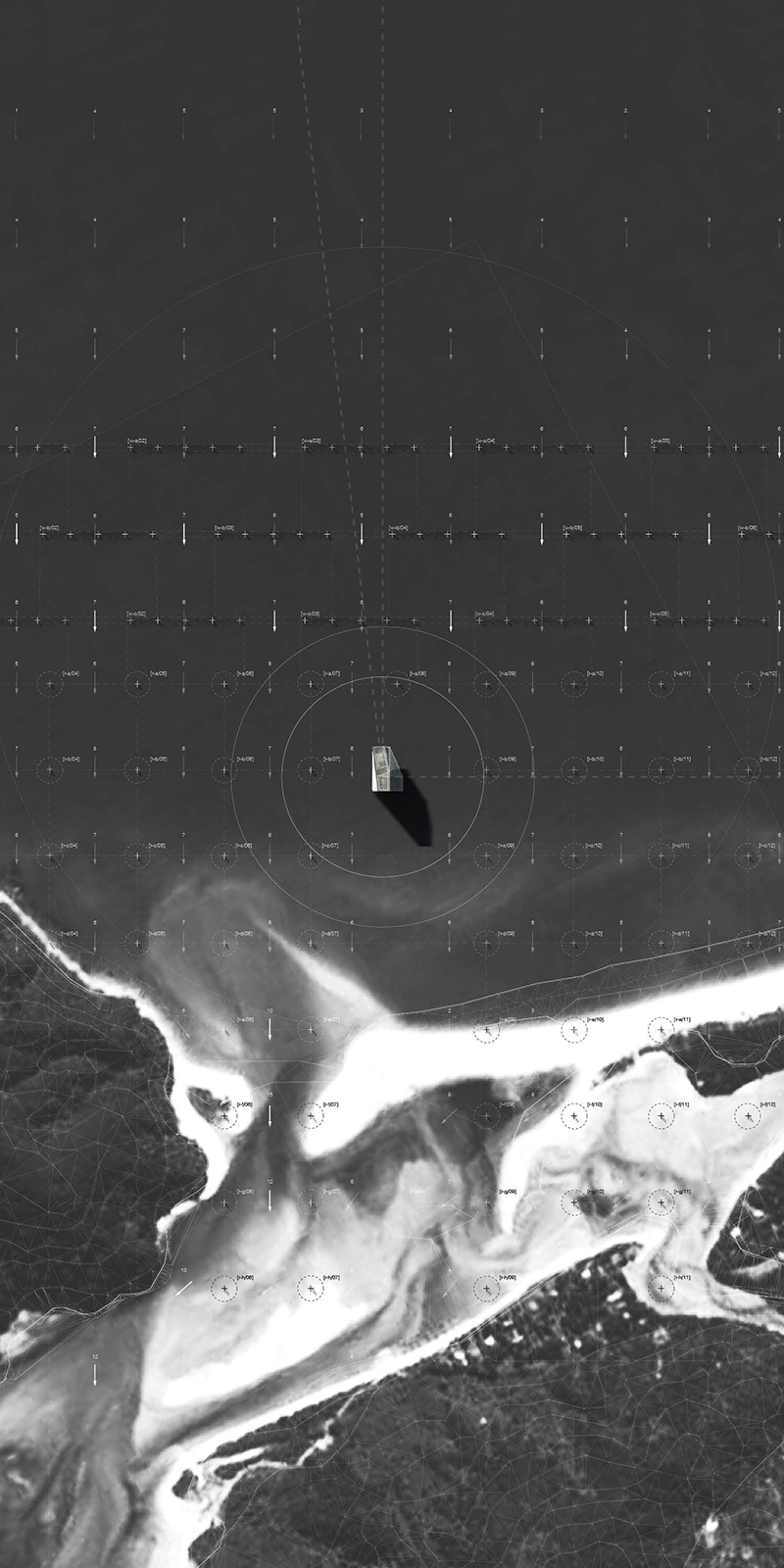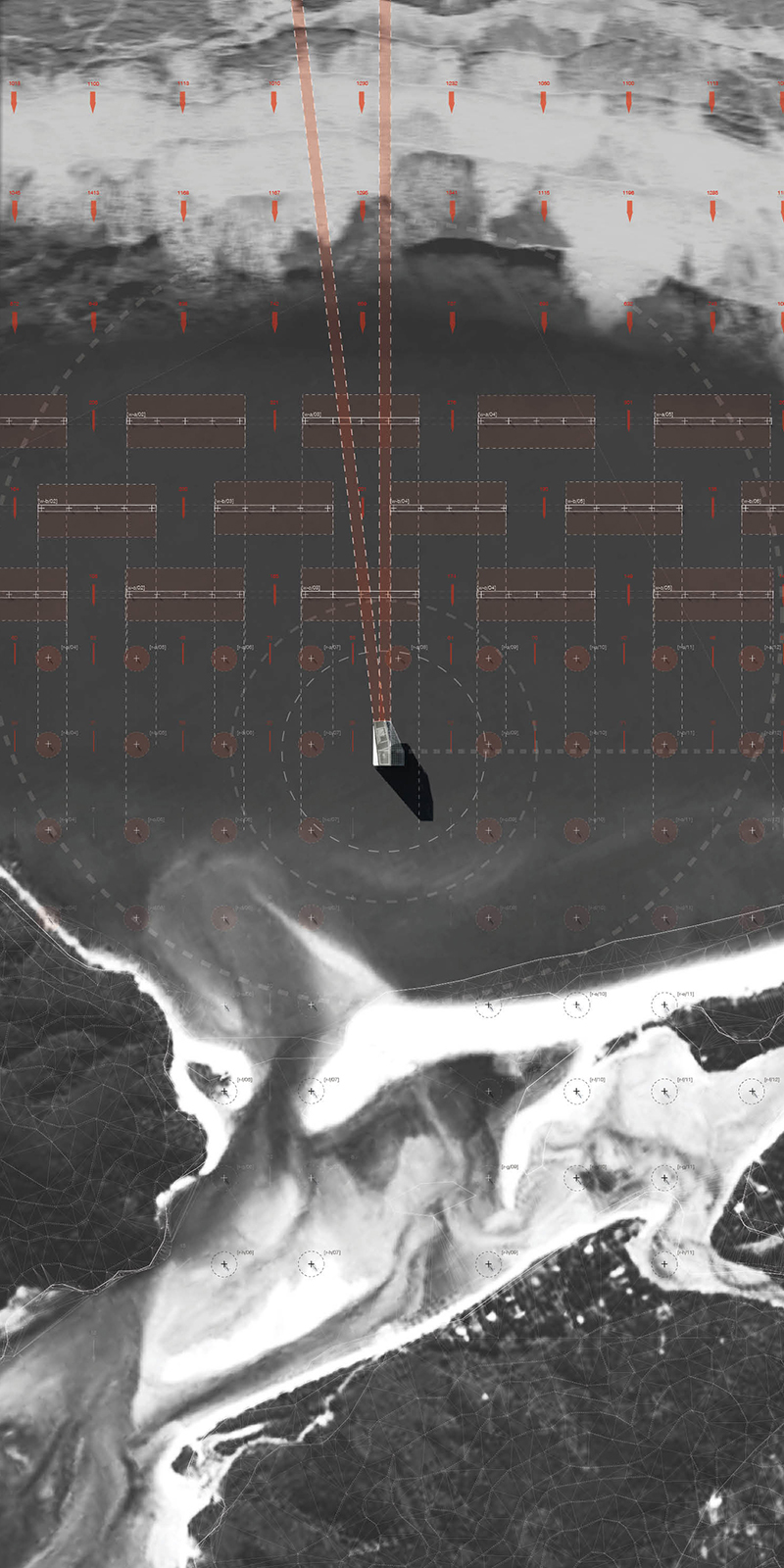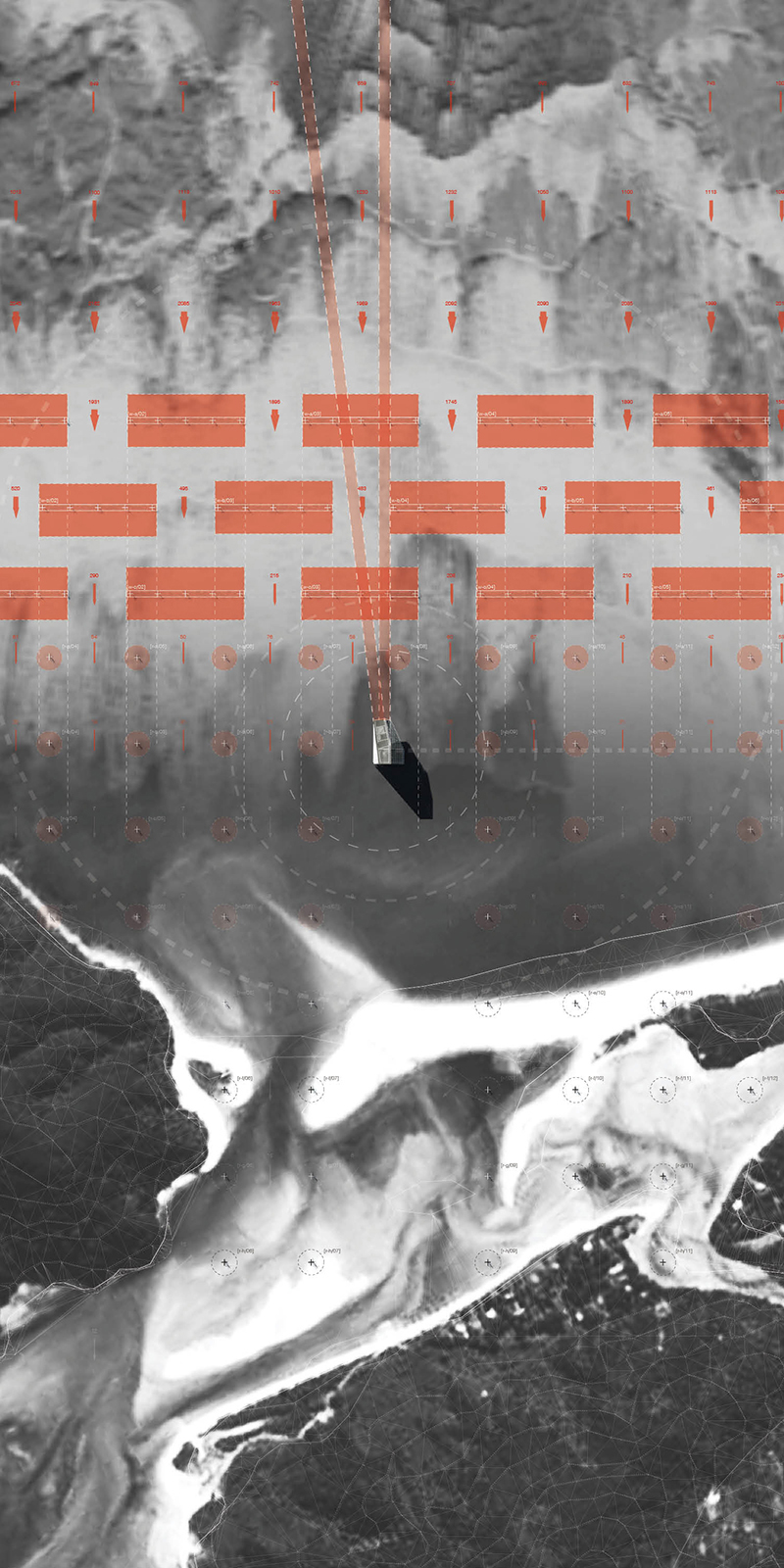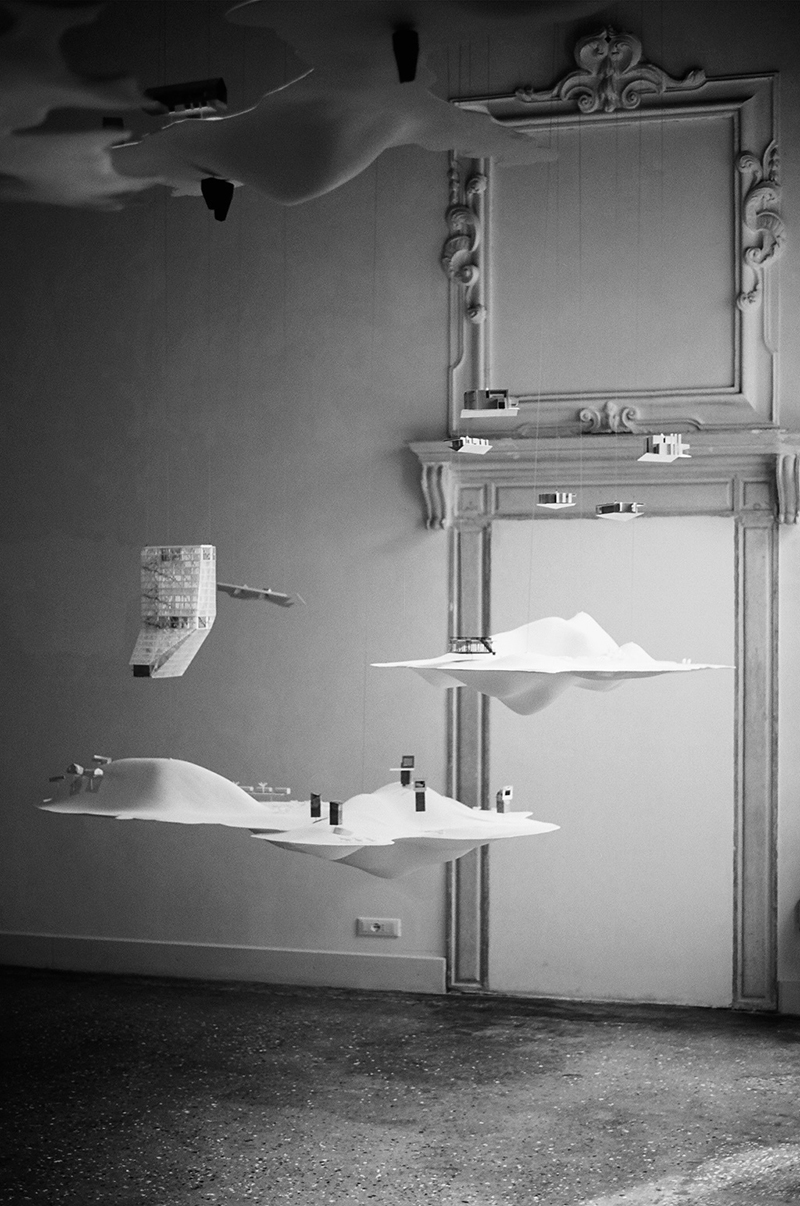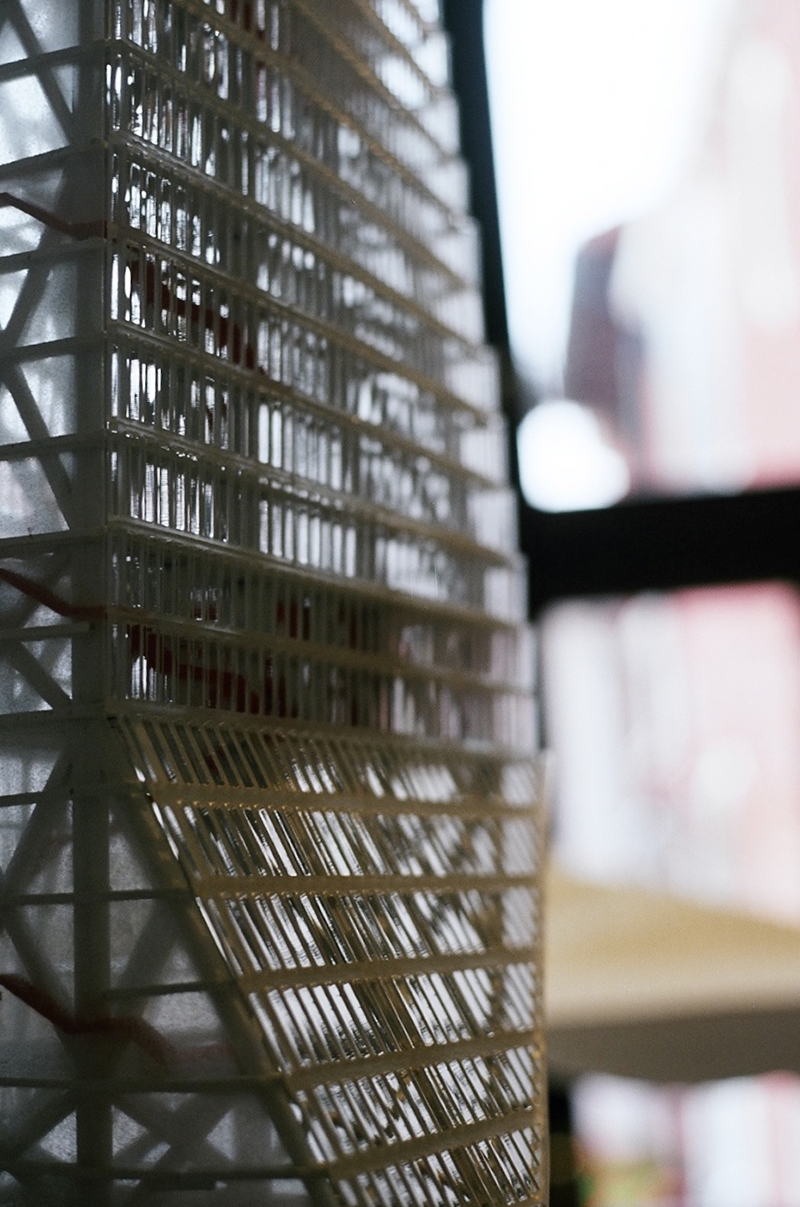Awaroa Lighthouse:
The vertical structure on shaky ground

Aufregend und wunderschön, die Mythologie des Leuchtturms aufgreifend, um eine leuchtende Innenwelt und ein einnehmendes Objekt in der Landschaft zu schaffen. —Jurykommentar, 1.Platz, AAA Ungebaute Architektur Preise, 2015
—
Ausgestellt auf der Venedig-Biennale der Architektur 2016, Ausstellung Neuseeland, ‘Zukünftige Inseln’
—
Das im neuseeländischen Abel-Tasman-Nationalpark gelegene Awaroa-Leuchtturm ist konzeptionell irgendwo zwischen der jenseitigen Schönheit der neuseeländischen Landschaft, und in der nationalen Psyche verborgenen Angst vor deren Zerstörung angesiedelt.
Sein Referenz ist der Leuchtturm, der sowohl als architektonische Typologie als auch wegen seiner imaginären Qualität angesprochen wird. Der Leuchtturm, der historisch inmitten einer steilen Küste steht und von heftigen Wassermassen umspült wird, wird durch seine Solidität, Stabilität und Sicherheit zum idyllischen Referenzpunkt für die vertikale Struktur, die auf instabilem Grund romantisiert wird. Der Form des Turms ist ein Spiel der Gegensätze: einerseits wirkt es streng und monolithisch, anderseits zeigt sich die Masse als potenziell zerbrechlich, anfällig für Verfall und Verwitterung.
Die historische Leuchtturmsfunktion als Navigations-, Richtungs- und Organisationsstruktur wird hier als Symbol der Voraussicht im Falle eines Erdbebens oder Naturkatastrophe neu vorgestellt. Durch die Aufzeichnung von seismischen Daten der Telemetrie-Stäben an seiner Basis, geht die Struktur im Notfall in die Defensive: Mauern, die mit Sand vom Ufer aufgepumpt werden, bilden behelfsmäßige Dämme, um die Landschaft vor Flutwellen oder Schlimmerem zu schützen.
Damit stellt dieses Werk die Frage nach den Eingriffen, zu denen die Menschheit bereit ist, um der Erhaltung zu halten.
—
Entwarf in Zusammenarbeit mit Henry Stephens und Nick Roberts
Exciting and beautiful, taking the mythology of the lighthouse to create a luminous interior world and an engaging object in the landscape. —Jury Comments, 1st Place, AAA Unbuilt Architecture Awards, 2015
—
Exhibited at the Venice Biennale of Architecture 2016, New Zealand Exhibition, ‘Future Islands’
—
Located physically within New Zealand’s Abel Tasman National Park, Awaroa Lighthouse is located conceptually somewhere between the otherworldly beauty of the New Zealand landscape, and anxiety over destroying it latent within its national psyche.
Its referential citation is the lighthouse, which is addressed as both an architectural typology for inquiry and for its imagistic quality. Historically pictured amidst precipitous coastline and shrouded by violent waters, the solidity, stability and reassuredness of the lighthouse within its siting becomes the idyllic reference point for the vertical structure romanticised on shaky ground. The geometry enfolds a play of opposites: at once austere and monolithic when confronted in one elevation, a shift in viewline reveals the mass as potentially fragile, susceptible to decay and weather.
The historical functions of the lighthouse as a navigational, directive, and organisational structure are re-imagined here as a symbol of foresight in the event of an earthquake or related natural disaster. Recording material seismic data from a local network of telemetric rods at its base, in case of emergency the structure shifts to the defensive: walls pumped with sand from the shores provide makeshift seawalls to protect the landscape from tidal waves, or worse.
In so doing, this work questions the extremes of intervention to which humanity will go for the sake of preservation.
—
Designed in collaboration with Henry Stephens and Nick Roberts
